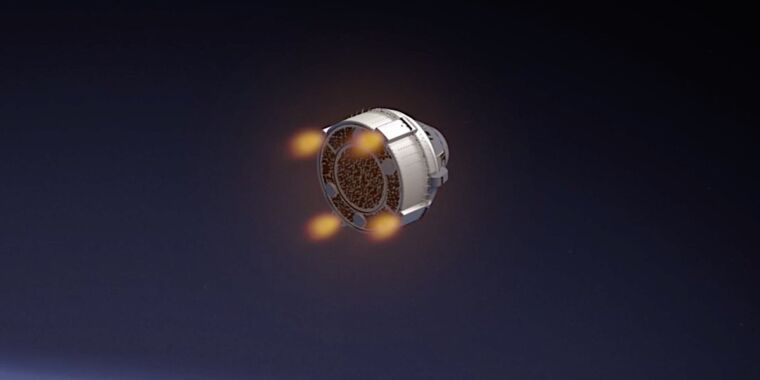

NASA officials said Wednesday that with no consensus on the safety of the Starliner crew capsule, they need another week or two before deciding whether to return two astronauts to Earth on a Boeing spacecraft or extend their stay at the International Space Station into next year.
Boeing’s Starliner spacecraft, which has been plagued by problems with its thrusters and helium leaks, is taking up valuable space on the International Space Station. It must leave the orbiting research complex, with or without its two-person crew, before SpaceX’s next Dragon mission to the station, scheduled for Sept. 24.
“We can juggle things and get it done if we need to extend, but it’s getting more difficult,” said Ken Bowersox, associate administrator for NASA’s Space Flight Operations Directorate. “With the consumables we’re using, with the need to use the ports for cargo missions, those kinds of things, we’ve reached a point where we have to make a decision in the last week of August, if not sooner.”
Last week, NASA officials said they expected to make a decision in mid-August — and possibly this week — but Bowersox said Wednesday that NASA probably won’t make a final decision on what to do with Starliner until the end of next week, or early the week of Aug. 26.
“We have ample time before we return Starliner to Earth and we want to use that time wisely,” Bowersox said.
NASA astronauts Butch Wilmore and Suni Williams launched in Boeing’s Starliner spacecraft on June 5. Their mission was the first crewed test flight of Boeing’s capsule before NASA cleared Starliner for regular crew rotations to the space station. But after software setbacks, concerns about its parachutes and previous problems with its propulsion system, Boeing’s Starliner program is more than four years behind SpaceX’s Dragon spacecraft, which first flew astronauts to the station in 2020.
Now, there’s a good chance the Starliner crew won’t be returning home in the spacecraft they launched in. Bowersox, the former astronaut, said NASA has brought in propulsion experts from other programs to take a fresh look at the thruster issue.
Engineers are still investigating the root cause of five of the 28 reaction control system thrusters, supplied by Aerojet Rocketdyne, that failed during approach to the space station the day after launch. The thrusters overheated as they pulsed repeatedly to adjust the rendezvous with the station. Similar control jet tests on Earth have suggested that a Teflon seal in an internal valve can bulge at higher temperatures, restricting fuel flow to the engine.
Four of the five thrusters that failed before Starliner docked at the station have recovered and generated near-normal thrust levels during test launches last month. But many NASA engineers aren’t convinced the thrusters will operate normally on Starliner’s journey from the space station to Earth. The thrusters are needed to keep the spacecraft pointed in the right direction as four larger rocket engines ignite to lift the capsule out of orbit and set it on a reentry trajectory for landing.
The rapid pulses of thrusters, combined with long firings of the four larger engines, could raise temperatures inside four doghouse-shaped thrusters around the perimeter of the Starliner’s service module. Once the deorbit burn is complete, Starliner will jettison the service module to burn up in the atmosphere, and its crew module will use a different set of thrusters to steer its reentry. Parachutes will then deploy to slow the descent, likely at White Sands, New Mexico.

“Web maven. Infuriatingly humble beer geek. Bacon fanatic. Typical creator. Music expert.”





More Stories
SpaceX launches 23 Starlink satellites from Florida (video and photos)
A new 3D map reveals strange, glowing filaments surrounding the supernova
Astronomers are waiting for the zombie star to rise again